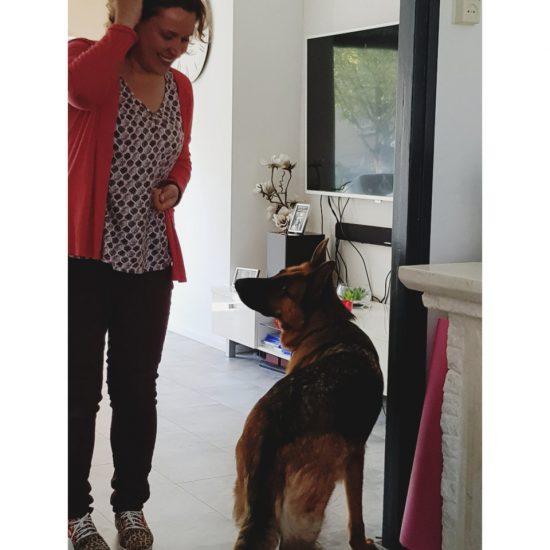Allow me to lift the veil on behaviour therapy and share a typical progress report. This is one I’ve received this week.
These reports illustrate the peaks and troughs of behaviour therapy: rare are the quick solutions and smooth sailing cases.
It also illustrates how much we rely on management, particularly at the beginning, when training hasn’t yet taken hold.
And it shows how we divide a conquer, starting on one bit of one problem, and working our way through gradually.
Lest you should think behaviour problems will give you a quick fix…
Why I use progress reports in dog training?
Because I try to run with evidence-based values, and not be blinded by my desire for everything to be perfect.
So we ask the clients to mark progress, 0 being unmanageable and 10 being completely resolved.
This way, we can be critical of our interventions and steer where need be.
Dog behaviour therapy: a look at the case
This case involves:
- Chasing and harassing the cat – who had become so terrified that he relegated himself to one corner of one room in the entire house: This was the highest priority in terms of animal welfare and safety. For this, we have recommended an exercise of controlled exposure (and tons of safety and animal welfare management measures for the cat).
- Pulling on the lead: We’ve decided not pulling on the lead through training, but to first try to deal with the dog’s over-excitement outside. To help the dog be more controllable during walks, we recommended the Mazterz harness for now (front-clip, so the dog essentially pulls against itself, walking back towards the leash holder when pulling).
- Reactivity to other dogs when on the lead: After analysing the case, this appears to be a case of frustrated greeting, on a dog who is extremely prone to over-stimulation. We have initially recommended a trial period of BAT training, teaching the dog to cope with the trigger in an alternative, non-problematic, way.

The dog behaviour therapy progress report
The progress report below was sent after 10 days of owner-led training (no guidance from us aside from the original evaluation and advice appointment):
- Chasing the cat: The cat, whilst still reserved, now frequently seeks the dog’s company AND, most importantly, no longer lives in fear, hiding in a corner. He is reclaiming his life in the house.
- Pulling on the lead: There is some improvement – at least the dog is manageable – but of course, as we haven’t tackled the underlying issue yet, the dog is still pulling.
- Dog-dog aggression on the lead: As feared, progress is too slow. This is because the triggers are too frequently unavoidable. We have to critically re-think our approach and step up management measures for this to work.

